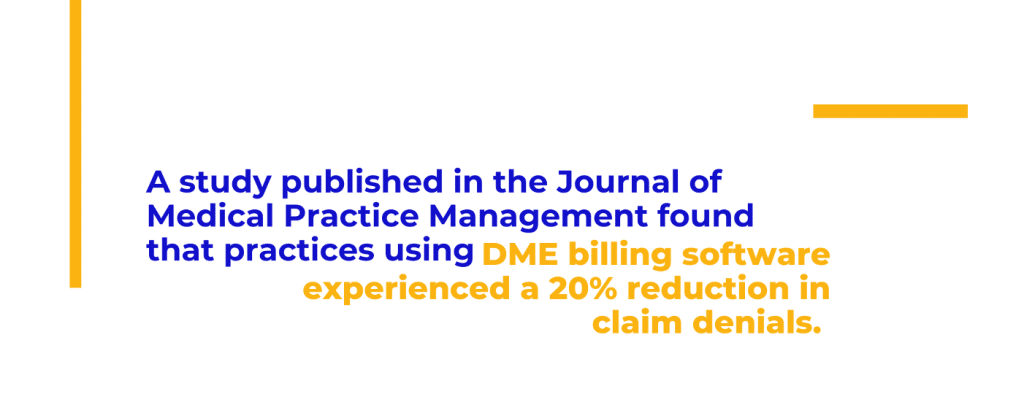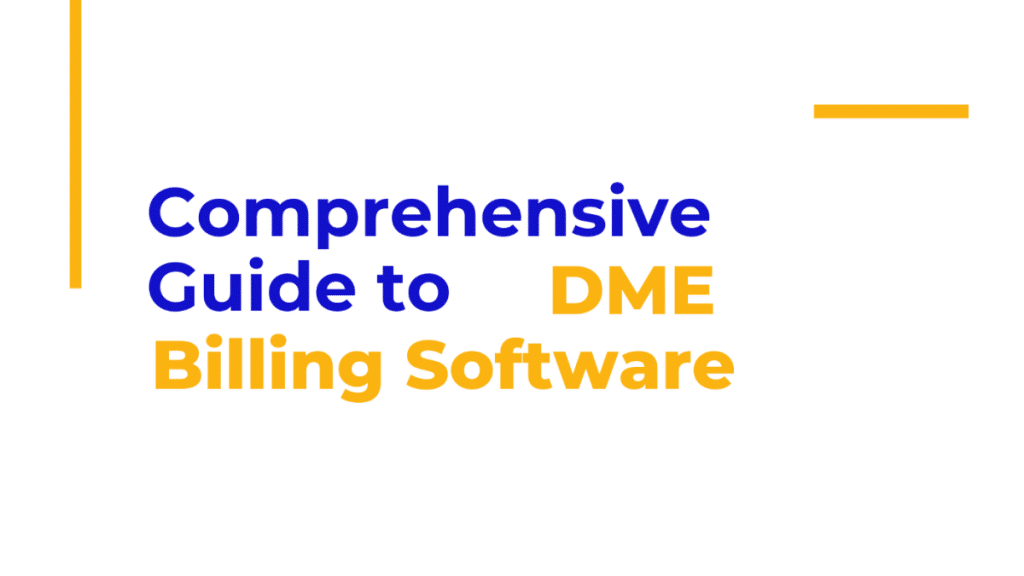The healthcare industry thrives on intricate billing processes, and DME is no exception. DME billing involves a unique set of challenges due to ever-changing regulations, complex coding requirements, and the need for prior authorization. Fortunately, DME billing software exists to streamline this process, improve efficiency, and maximize revenue for healthcare providers.
This comprehensive guide delves into the world of DME billing software, exploring its functionalities, benefits, and key considerations for choosing the right solution.
Understanding DME Billing Complexities
The DME billing process can be a labyrinth for providers. Here’s a glimpse into the complexities:
- Constant Regulatory Updates: The landscape of DME billing is constantly evolving. Providers must stay updated on changes to HCPCS (Healthcare Common Procedure Coding System) codes, reimbursement rates, and prior authorization requirements.
- Meticulous Coding: Accurate coding is paramount for successful claim submissions. DME billing involves juggling HCPCS codes for equipment, modifiers, and diagnosis codes (ICD-10). Mistakes in coding lead to claim denials and delays in reimbursement.
- Prior Authorization Hurdles: Many DME items require prior authorization from payers before they can be delivered to patients. This process may not be fast and detailed records needs to be kept during the procedure.
The Power of DME Billing Software
DME billing software acts as a knight in shining armor, helping providers navigate these complexities. Here’s how it empowers healthcare practices:
- Enhanced Accuracy: The software automates many coding tasks, reducing the risk of human error. Built-in code libraries and editing tools ensure accurate claim submissions, leading to fewer denials and faster reimbursements.
- Streamlined Workflows: DME billing software integrates seamlessly with Electronic Health Records (EHR) systems. This eliminates manual data entry and streamlines workflows, allowing staff to focus on patient care.
- Efficient Prior Authorization: The software can manage the entire prior authorization process, including generating requests, tracking approvals, and managing documentation. This saves time and reduces administrative burden.
- Improved Revenue Cycle Management (RCM): DME billing software provides real-time claim status tracking and reporting tools. This allows for proactive management of denials and faster collections, ultimately improving cash flow.
Statistics Highlighting the Impact of DME Billing Software
The American Medical Association (AMA) reports that healthcare providers lose an average of $2,650 per physician annually due to billing errors. DME billing software can significantly reduce these losses by improving claim accuracy.
A study published in the Journal of Medical Practice Management found that practices using DME billing software experienced a 20% reduction in claim denials. This translates to faster reimbursements and improved financial performance.

Choosing the Right DME Billing Software
With a plethora of DME billing software options available, choosing the right one for your practice is crucial. Here are some key factors to consider:
- Features and Functionality: Ensure the software offers features specific to DME billing, such as prior authorization management, HCPCS code libraries, and real-time claim tracking.
- Integration Capabilities: Make sure the software friendly with your current EHR if possible because synching different platforms creates data silos.
- Ease of Use: The software should be user-friendly and intuitive for staff with varying levels of billing expertise. Training and support resources are also important factors.
- Scalability: Think about how your practice is to develop in future. The software should be able to grow with your business so that it can meet the changing needs of the business.
- Security and Compliance: Ensure the software adheres to HIPAA regulations to safeguard patient data.
Beyond the Software: Best Practices for DME Billing
While DME billing software is a powerful tool, it’s not a magic bullet. Here are some best practices to ensure results:
- Maintain Accurate Patient Data: Complete and accurate patient demographic and insurance information are essential for clean claims.
- Stay Updated on Regulations: Regularly review and educate staff on changes to DME coding, reimbursement rates, and prior authorization requirements.
- Invest in Staff Training: Provide comprehensive training on DME billing processes and software utilization to ensure staff proficiency.
- Perform Regular Audits: Conducting internal audits of your DME billing practices helps identify and address any potential issues.
Conclusion
DME software is an invaluable asset for healthcare providers, offering a path to increased efficiency, improved accuracy, and maximized revenue. By understanding the software’s capabilities and implementing best practices, providers can focus on delivering exceptional patient care while ensuring financial stability for their practice.
